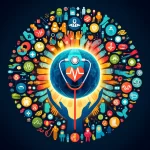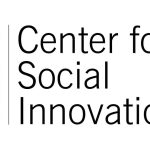The following is an exclusive preview of my new book “ChatGPT, MD: How-AI Empowered Patients & Doctors Can Take Back Control of American Medicine,” which was a unique, six-month collaboration with ChatGPT, my coauthor. All profits from the book benefit Doctors Without Borders. An additional donation will be made for all eBook and hardcover purchases on April 9 via Amazon.
Chapter one (below) offers a brief snapshot of medical miracles throughout history, revealing that what often seems impossible at first goes on to become standard, only to be replaced by yet another “miraculous” medical breakthrough. ChatGPT and its generative AI peers have the potential to save and improve countless lives in miraculous fashion—if healthcare professionals choose to embrace it.
Chapter one: The evolution of medical miracles
Picture yourself standing in the halls of Groote Schuur Hospital in Cape Town, South Africa, on December 3, 1967. You can sense that the air is charged with anticipation, nerves, and the undeniable sense that an historic moment is unfolding.
You watch as a 53-year-old grocer named Louis Washkansky is wheeled into one of the operating rooms. He has diabetes and severe heart failure. Without immediate surgery, he doesn’t have long to live.
Soon, his life and the life of another patient will intersect in unprecedented fashion.
In the other surgical suite, a 25-year-old bank clerk named Denise Darvall is also being prepped for surgery. Yesterday, the young clerk had been the picture of perfect health when fate dealt a devastating blow. She and her mother had been shopping downtown when the two stepped off the curb to cross a busy street and, wham, a fast-moving vehicle collided with the young Darvall, severely damaging her body and destroying her brain.
In the first operating room where Washkansky lies, a pioneering cardiac surgeon named Christian Bernard splits the grocer’s sternum down the middle with a power saw. He then places the patient on a cardiopulmonary bypass—allowing for a bloodless field on which to perform a surgical procedure that has never been attempted before.
In the second operating room, surgeons remove the heart and kidneys of the brain-dead donor. As the young woman’s kidneys are rushed to a distant OR, another physician carries her heart through the entryway of the first surgical suite to the table where Dr. Bernard now stands beside Washkansky’s unconscious body.
And here, in Cape Town, a heart once beating in one human is transplanted into another, marking a leap in medical science so profound that it borders on the miraculous. This is not just surgery taking place. It is a moment that will redefine the boundaries of medicine, turning the seemingly impossible into reality.
* * *
When I finished medical school at Yale, I chose Stanford University for my residency. I did so for the opportunity to work with Dr. Norman Shumway, the medical center’s chief of cardiac surgery. A year after the first human heart transplant took place in Cape Town, Dr. Shumway performed the first “successful” heart transplant in the United States. I qualify that word because the recipient, a 54-year-old steel worker, lived only 14 days after the operation (four days fewer than the patient in Cape Town).
Despite the initial travails of this risky surgical procedure, the following decade created a nationwide burst of enthusiasm for heart transplantation. Although I would eventually choose plastic and reconstructive surgery for my specialty—having fallen in love with the beauty of cleft lip repair on global surgical missions—I’ll never forget my days in the OR at Stanford with Dr. Shumway, a brilliant technical surgeon and dedicated medical pioneer.
By the time I arrived at Stanford, he had persevered in making cardiac transplantation safer and more reliable. Despite intense controversy over the legal and economic issues surrounding the procedure, alongside difficult ethical questions about what constitutes “brain death” in potential donors, Dr. Shumway and his team never gave up. The team advanced the operative technique decade upon decade, paving the way for a procedure that is now standard.
Looking back, as I contemplate the magnitude of risks that both patients and surgeons were willing to accept in those early days of heart transplantation, I’m struck by the arc of modern medicine. In this profession, again and again, the unimaginable becomes possible and then routine. Research from the 1980s shows that only 30 percent of patients survived five years post-transplant. Today, the long-term survival rate exceeds 80 percent.
* * *
American medicine now finds itself on the precipice of another revolutionary moment. This one is not taking place in an operating room but instead within the digital domains of generative AI. Technology that once seemed the stuff of science fiction is becoming pervasive.
Initially received with awe and disbelief in November 2022 when OpenAI released its large language model, ChatGPT, this “miraculous” technology is already developing into an integral part of daily life.
Dozens of industries—from retail and finance to consulting and entertainment—are investing billions of dollars to harness the full potential of ChatGPT and other forms of generative AI. There are, as of this book’s publication, more than 300 different categories of AI tools on the market: from simple text-to-text generators to something called “NeRFs,” neural radiance fields, which can be used to generate 3D imagery based on 2D images. With AI, you can even clone your own voice and use it to record an audiobook. More categories and use cases are surfacing constantly.
History teaches that today’s technological miracles will become tomorrow’s mundanities. Just as heart transplants moved from groundbreaking to standard care, generative AI will—in time—transition from a wondrous novelty to a technology people rely on as comfortably as they do their smartphones and computers. And, one day, this radical technology will transform medical practice, as well.
If you haven’t tried any of the generative AI platforms yet, I encourage you to do so at the conclusion of this chapter. You will quickly find yourself as rapt as I did in spring 2023 when I began typing questions into ChatGPT (located at chat.openai.com).
One of my earliest requests was a simple query. I typed the following prompt into the message bar and tapped the return key.
“What is a miracle?”
With that reply, I realized a similar response could one day be said of generative AI itself. While it is not a miracle, ChatGPT and its digital cohorts have both the power and potential to save and improve countless lives should healthcare professionals choose to embrace it.
At first, GPT-4 (the upgraded, subscription version of ChatGPT that launched in March 2023) responded as I had expected, providing a religious definition.
“An extraordinary event that is seen as a sign of God’s supernatural power.” But at the end of the answer, it pointed out, “The definition and interpretation of what constitutes a miracle can vary greatly, depending on cultural, religious, and personal beliefs.”
I pressed for more and the AI replied, “In a broader sense, the term ‘miracle’ can also be used in a secular context to describe any highly improbable or extraordinary event, accomplishment, or survival, often attributed to luck, fate, or exceptional human effort.”
I then asked its opinion on whether heart transplantation is a miracle. After a brief pause to process my question, the blinking white dot on the screen zoomed from left to right, letters trailing behind it until the computer read: “Heart transplantation is not considered a miracle. It is a testament to the progress and capabilities of modern medicine and the dedication of healthcare professionals to save and improve lives.”
This incredible technological application may soon follow that familiar pattern of the impossible becoming expected—a hallmark of human existence and medical progress. I believe generative AI will soon become a part of this arc. And I understand that some readers will meet this vision of the future with due skepticism.
History is replete with instances where the initial incredulity surrounding breakthrough innovations gave way to widespread acceptance and integration into the fabric of society.
If, in 1900, I told you that two brothers were set to take flight, soaring above the ground in a man-made machine, you’d have thought me crazy or them suicidal. Nowadays, airplanes carry nearly 900 million American passengers every year over the clouds to their final destinations with greater safety than traveling by car.
For nearly all of medicine’s five millennia, dating back to the ancient civilizations of Egypt, Mesopotamia, India, China, and Greece, patients and doctors alike viewed the very concept of transferring a heart from one human body to another impossible without divine intervention. And yet, as GPT-4 explained, “Medical advancements have made heart transplantation a relatively routine procedure in specialized medical centers.”
Across the annals of medical care, what at first seems unimaginable goes on to become routine, only to be succeeded by a new impossibility. A drug capable of curing pneumonia or tuberculosis was unattainable until antibiotics became a mainstay in healthcare. The idea that a gas would allow doctors to cut into the human body without inflicting pain was, if anything, a dream until anesthetics were discovered. And a machine that could reason and write like a human, even providing expertise that is indistinguishable from a doctor, was once the province of science fiction. Until now.
We stand on the brink of a new era in healthcare, one shaped by advancements in generative AI. ChatGPT embodies this new frontier. Its potential to transform healthcare is revolutionary—and timely, too. Welcome to a world of unimaginable possibilities.
Footnote: Although I routinely reference ChatGPT by itself in the pages that follow, I use it as shorthand for what I anticipate will be a long series of generative AI upgrades, with many different names, competitors, uses, and successors. Alternative generative AI products are mentioned by name in cases where credit is owed and the name warrants mention—as with Google’s Med-PaLM 2 and Gemini, and IBM’s Deep Blue in later chapters.







